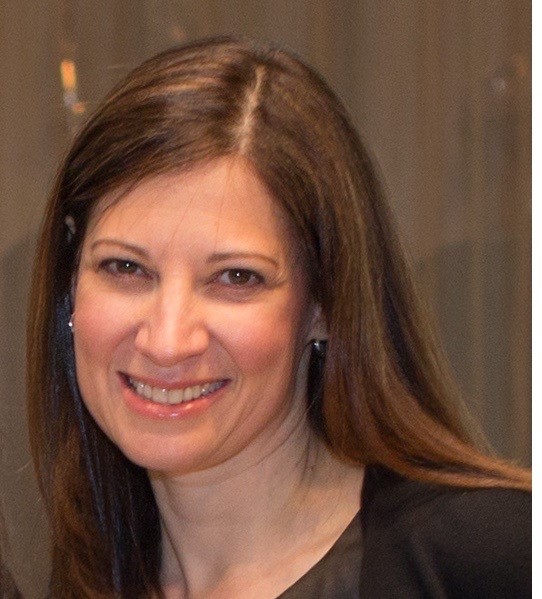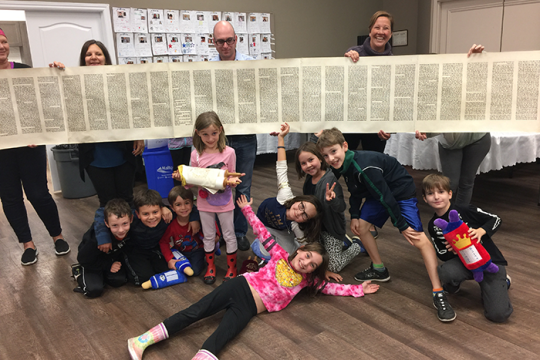
Facebook’s lighthearted quizzes often clog my newsfeed. Answer a few simple questions, they tease, and, voila, they will reveal which superhero, candy bar, Muppet, von Trapp Family singer, or European city best characterizes your personality.
Sometimes, I ponder creating a quiz of my own: “What Torah Trope Are You?”
Chants used for reading Torah and other sacred texts may be an unusual metaphor to assess one’s inner nature. However, the symbols that help vocalists create the chanting melodies can be quite revealing.
In a typical Torah portion, there are roughly 20 recurring trope symbols. Some function like punctuation – commas, semi-colons, and periods – to separate words and ideas; others combine words and phrases together. Some tropes contain few notes and are utilitarian while their opposites are vocal show-offs, giving certain words musical intricacy. Still other tropes are helpers, creating hardy renderings of more powerful tropes. The tropes include some look- and sound-alikes, but they are individuals and each plays a role in creating the chants for our sacred texts.
As my b’nei mitzvah students become familiar with their Torah portions and the tiny trope symbols that float around the Hebrew words – indicating the melody and proper way to accent the Hebrew to shed light on its meaning – I often ask which tropes they like best. Young people reticent about chanting may prefer the small vertical line indicating they have reached the end of the verse (sof pasuk). Students who enjoy singing may favor the effusive pazer. My personal favorite is the darga and tevir duo, which captures my heart and ear with a melodic combination of downward and upward movement. Even their symbols are charming: the darga looks like steps and the tevir a wayward eyeball.
Using “What Torah Trope are You?” as a personality quiz, consider these examples:
Mercha: The opening notes to many Torah verses, you’re the trumpet blast that signals a call to action and the first person to start a task. A real team player, you’re all business, with no wasted effort or glitz. You’re the workhorse of the tropes.
Tipcha: You’re “The Closer” among the tropes. You clean the dryer lint trap, send finished emails to committee members, and start the dishwasher after straightening the kitchen. You never make a fuss and together with your buddy, mercha, you communicate tremendous swaths of sacred text quickly and efficiently.
Munach: A helper trope, you forge connections between words, altering your style and voice depending on the trope you are assisting. You leap around, show quite a bit of personality, and, look identical to another munach when standing side-by-side, even though your voices vary. You are the glue between words of Torah, the unheralded but vital worker in an organization.
Etnachta: The resting trope, your firm command to pause helps readers reflect, catch their breath, and make sense of the Hebrew syntax. You are the team player willing to pause in the midst of a project to evaluate progress.
Sof Pasuk: The end of the verse symbol, you are adept at typing up loose ends and bringing conversations and projects to a stop. Your voice is different when ending a phrase than when winding up an entire section of text. You know when to say, “The end.”
Yetiv: You’re the cutest little grace note, always attached to another note that descends rapidly. You shake up listeners, alerting others when something important needs to be said or done.
Shalshelet: Your name means “chain,” and you look like a tightly coiled bolt of lightning with a show-stopping voice that is a recurring arpeggio and some descending notes. You know exactly who you are and when you arrive, you bring the drama with you.
Your personality doesn’t easily fit these trope definitions? Perhaps you resemble a pashta, perpetually leaning and leaping upward, or maybe a revi-ee, descending predictably yet melodically. Or maybe you’re a combination: part shalshelet, part yetiv, and part sof pasuk.
Regardless, the 10th-century Masorites who first codified the cantillation system in Tiberias knew a lot about the symphony of Torah. They likely knew a lot, too, about human psychology and perhaps about personality types, including those of the people who continue to chant their music a thousand years after they developed it.
For a different perspective on Torah trope, check out Cantor David Reinwald’s blog post, How Trope Strengthens Our Connections to Torah.




